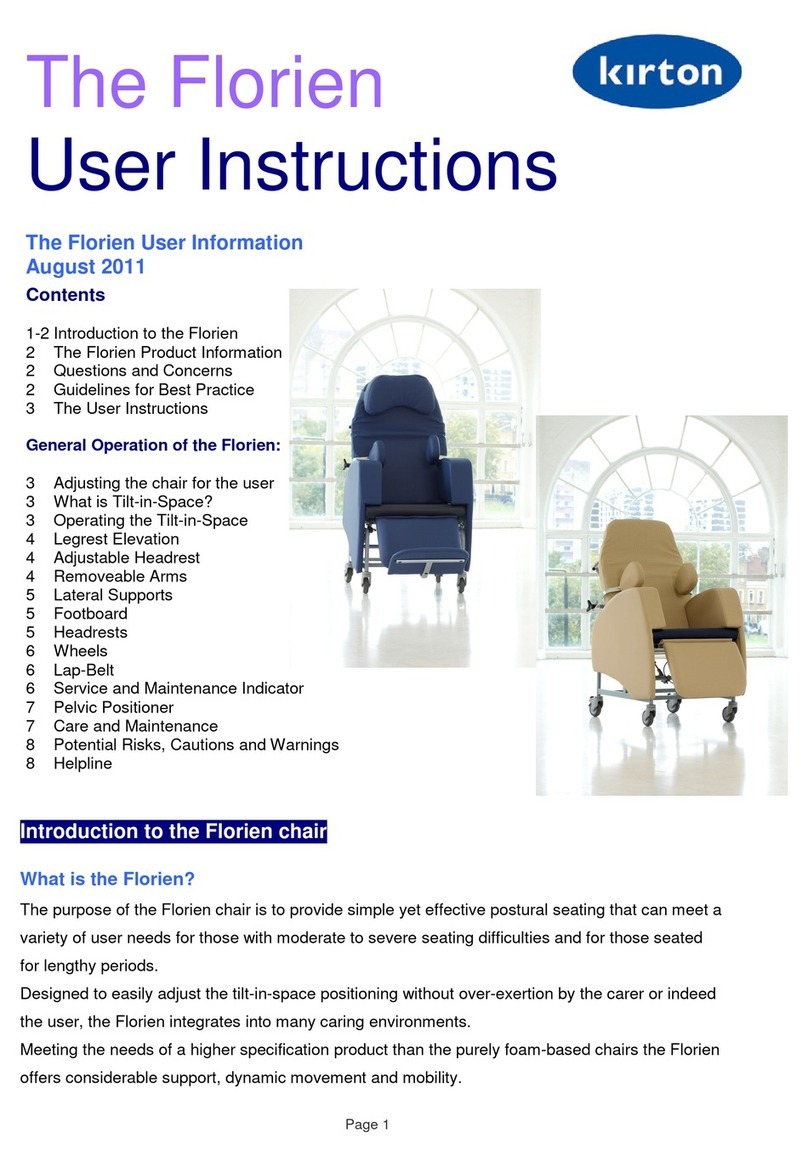
4
Issue 1 April 2017
1. Introduction to the Omega chair
Thank you for purchasing a Kirton Omega chair.
Comfort and security underpins the Omega chair providing a
robust, durable chair able to withstand demanding and severe
movements yet provide a safe and relaxed seating position.
The Omega chair was originally designed for those with
Huntington’s disease and other neurological conditions. Over
time, the Omega chair has become recognised as a valued
seating system for many other caring environments.
1.1 Why is there a need for this type of chair?
A sculpted back and contoured seat assures optimum comfort
and provides good midline positioning for activities such as
eating and drinking, while relaxing and sleeping are encouraged
by the uniquely linked back and seat recline.
As the back angle reclines, the seat angle increases to
guarantee a consistent seated position and a sense of security
with the high broad armrests.
The dense foam legrest is securely fitted to the Omega by
strong, flexible attachments providing full leg support. For the
more ambulant occupant, the legrest can be removed, enabling
the occupant to exit the chair more readily. An optional sliding
footrest can be added to the Omega for correct, safe positioning
of the feet particularly when an occupant is being moved whilst
seated in the chair without the legrest attached.




























